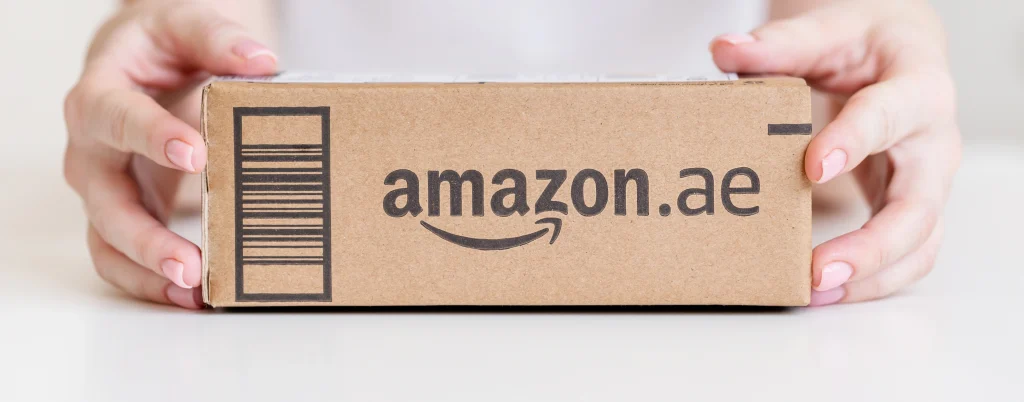Running an Amazon storefront from India isn’t a side gig anymore — it’s a full-time circus.
You juggle listings, chase reviews, manage couriers, and still find time to restock that one SKU that suddenly went viral.
And just when you think the show’s over, Amazon’s payout email lands: “Your payment is on its way.”
Great news — until it finally reaches your account and the INR looks slimmer than expected.
Somewhere between Payoneer, intermediary banks, and currency conversions, your money has gone through more hoops than your inventory.Let’s pull back the curtain on that circus act — “Payoneer vs Bank Transfers” — and see where your rupees are really going.
Why This Comparison Matters for Amazon Sellers in India
Cross-border e-commerce is booming. Thousands of Indian sellers now ship products to customers in the US, UK, and UAE through **Amazon Global Selling India**.But while sales are global, payouts often feel like a guessing game.
The truth: your “Amazon seller payment cycle”and the method you use to “receive money from the marketplace” directly decide your profit margin.
Two sellers can make the same USD revenue and end up with completely different INR once the money lands — depending on whether they used Payoneer or a direct bank transfer.
That difference can quietly erase weeks of optimization work.
How Amazon Marketplace Payments Flow for Indian Sellers
Amazon doesn’t send INR straight to your account. It moves your earnings in USD through a middle layer — either Payoneer or your bank’s SWIFT network.
Both routes are “RBI-compliant”, both deliver the money, but their costs and timelines aren’t twins.
The Two Routes — Payoneer and Direct Bank Transfer
Payoneer:- creates a virtual USD collection account for you. Amazon deposits your marketplace earnings there, Payoneer converts them using its own FX rate, and INR hits your local account within a few days.
Bank Transfer (SWIFT):- sends the USD payout directly to your Indian bank. Several intermediary banks touch the money along the way, each taking a small cut before your bank converts it to INR.
In other words: both methods let you **receive payment online**, but one’s designed for marketplace speed, the other for paperwork.
Typical Payment Cycle Comparison
| Step | Payoneer | Direct Bank (SWIFT) |
|---|---|---|
| Source | Amazon Global Selling | Amazon Global Selling |
| Currency | USD | USD |
| Conversion | Payoneer FX rate | Bank FX + intermediary deductions |
| Settlement | 2–4 days | 3–7 days |
| Proof | e-FIRC (Payoneer portal) | Physical FIRC via bank branch |
Read our complete guide on T+0 to T+3 settlement time for Indian exporters
Fees and FX Breakdown — Payoneer vs Bank SWIFT
| Cost Element | Payoneer | Bank Transfer (SWIFT) |
|---|---|---|
| Transfer Fee | 1.5–2% FX markup | $25–40 per transfer |
| FX Rate Type | Internal rate | Bank-negotiated rate |
| Hidden Deductions | None (transparent) | Intermediary banks (~$10–15) |
| Settlement Time | Faster | Slower |
| Documentation | e-FIRC | Manual FIRC |
Example — $1,000 Amazon Marketplace Payment
| Method | USD Payout | Fee | FX Rate | INR Landed | Time Taken |
|---|---|---|---|---|---|
| Payoneer | $1000 | 2% | ₹82.00 | ₹80,360 | 2–3 days |
| Bank SWIFT | $1000 | $30 (~₹2,400) | ₹81.50 | ₹79,100 | 4–6 days |
That ₹1,260 gap is enough to restock your next shipment of mailers — or pay a week of sponsored ads.
The difference hides in **FX rates** and **bank transfer fees India** seldom explains.
Why Most Sellers Miss These Hidden Costs
Amazon’s dashboard only shows the gross USD amount. You see “$1,000 paid,” assume all’s well, and move on.But that number travels through multiple layers — Payoneer charges, bank FX spreads, intermediary fees — before it becomes usable INR.
By the time it lands, you’ve already absorbed the hit without realizing it.It’s why so many sellers think *profit margin shrank*, when in reality, *their payout path did.*
Amazon’s dashboard only shows the gross USD amount. You see “$1,000 paid,” assume all’s well, and move on.But that number travels through multiple layers — Payoneer charges, bank FX spreads, intermediary fees — before it becomes usable INR.
By the time it lands, you’ve already absorbed the hit without realizing it. It’s why so many sellers think “profit margin shrank”, when in reality, “their payout path did”.
Compliance and FIRC — Who Makes It Simpler?
A “Foreign Inward Remittance Certificate (FIRC)” is the RBI’s proof that foreign income entered India. You need it for GST refunds, audits, and compliance under export rules.
| Platform | FIRC Process | Documentation | Ease |
|---|---|---|---|
| Payoneer | e-FIRC via partner bank | Digital download | Easy |
| Bank Transfer | Manual via branch | Physical FIRC copy | Slow |
Payoneer issues e-FIRCs directly through its dashboard. Banks, on the other hand, still rely on emails, stamped copies, and patience. For “Amazon Global Selling India” users, that delay can block refunds or slow paperwork — which is the last thing a scaling seller needs.
Pros and Cons
| Feature | Payoneer | Bank Transfer (SWIFT) |
|---|---|---|
| Transparency | Medium | Low |
| Speed | Fast | Slower |
| Cost Predictability | Good | Poor |
| Integration | Marketplace-ready | Manual |
| Compliance | RBI-approved | RBI-approved |
Both options work, but only one feels built for modern e-commerce.
Verdict — Which Works Better for Amazon Sellers?

If you rely on marketplaces like Amazon US or Amazon UK, Payoneer’s “receive payment online” model usually makes sense. It’s quick, automated, and ties directly into Amazon’s payout cycle.
If you’re a high-volume exporter negotiating custom FX rates, your “bank SWIFT” route might compete — but it’s slower, costlier, and manual.
Most Indian sellers unknowingly lose 1–3 % of their margins in these hidden layers. Payoneer offers speed and simplicity; banks offer familiarity and friction
Quick Tips to Maximize INR from Amazon Marketplace Payments
* Check your “landed INR” after every payout — not just dashboard USD.
* Compare the “FX rate + fees”, not just the method.
* Keep monthly “e-FIRCs” ready for compliance.
* Use RBI-regulated partners that publish conversion breakdowns.
* Avoid splitting small payouts; batch them when possible to reduce per-transfer cost.
In Summary
Both Payoneer and direct bank transfers will get your dollars home.Payoneer gives you speed, automation, and seamless marketplace integration.Banks give you legacy systems — and legacy surprises.But if you’d rather stop playing detective with FX rates and missing rupees, there’s a smarter option built for Indian sellers.
HiWiPay combines fast, fully RBI-compliant cross-border payments with zero markups, instant e-FIRC/e-BRC automation, and global virtual accounts in 25+ currencies.
No hidden deductions. No banking maze. Just transparent, on-time INR settlements — designed by people who’ve built India’s payment rails before, including Dewang Neralla (ex-Atom Technologies & NTT Data Payments).
Up next: HiWiPay for Amazon Sellers — How to Receive Global Payouts Seamlessly in INR.
Because what matters isn’t what Amazon sends — it’s what finally lands.e



